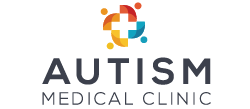Clinicians diagnose autism using behavioral tests for the core features of the condition: communication difficulties, social challenges and restricted or repetitive behaviors.
But getting an autism diagnosis can be a long and challenging process. Because autism is a heterogeneous condition defined by behavior and not by a single gene, blood or brain profile, clinicians use reliable diagnostic tools to assess an individual’s strengths or weaknesses and develop personalized treatment plans.
